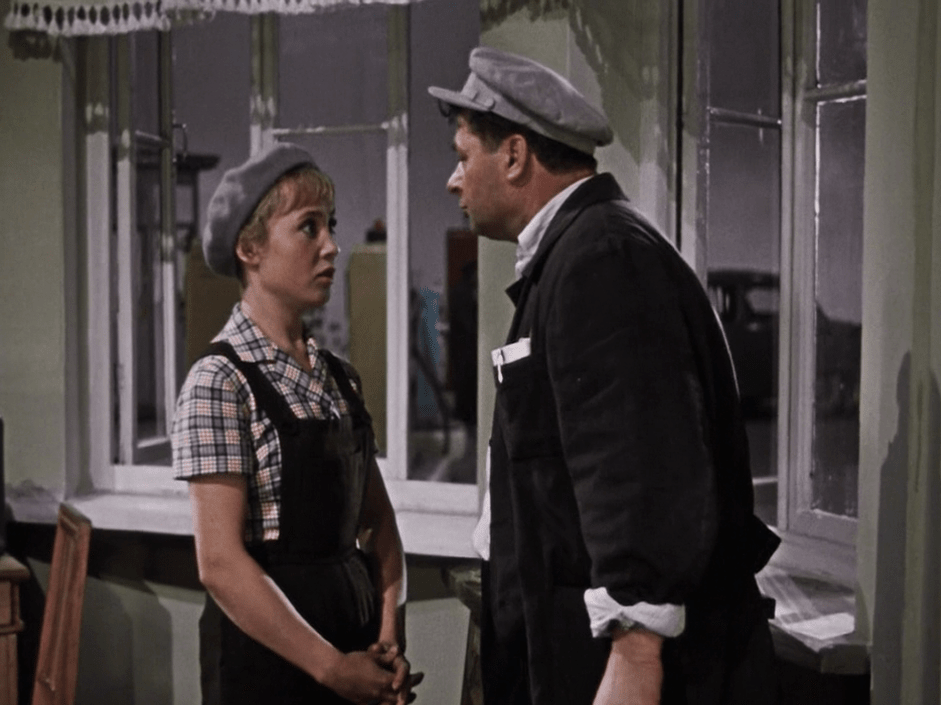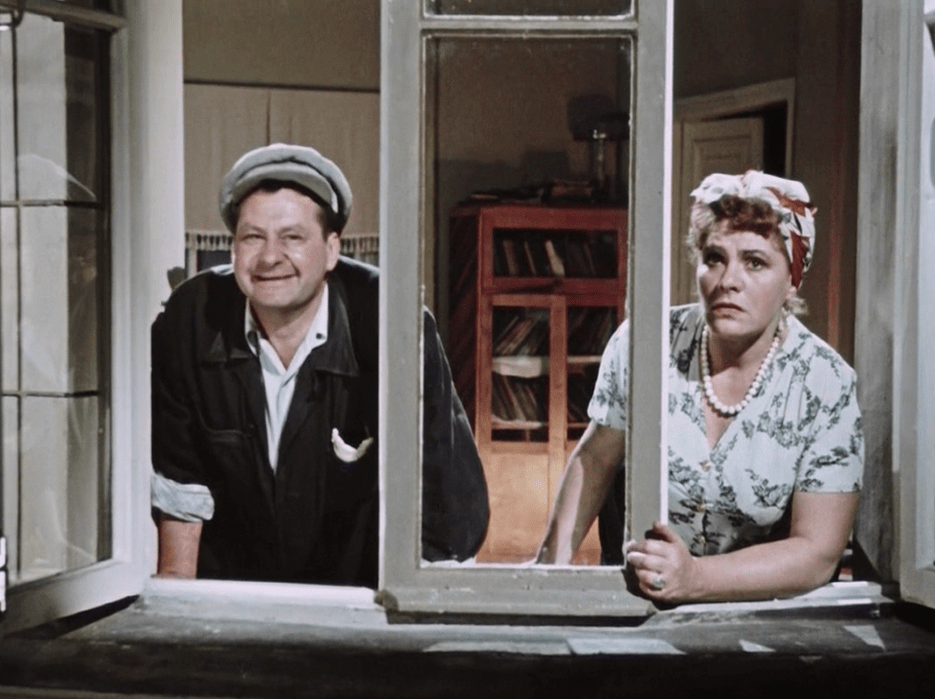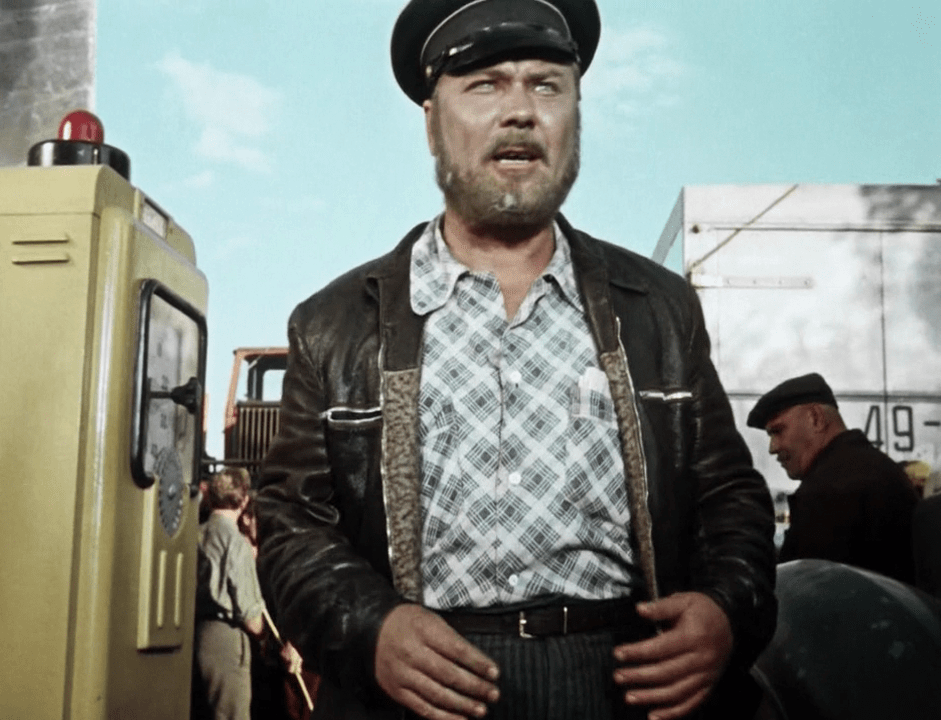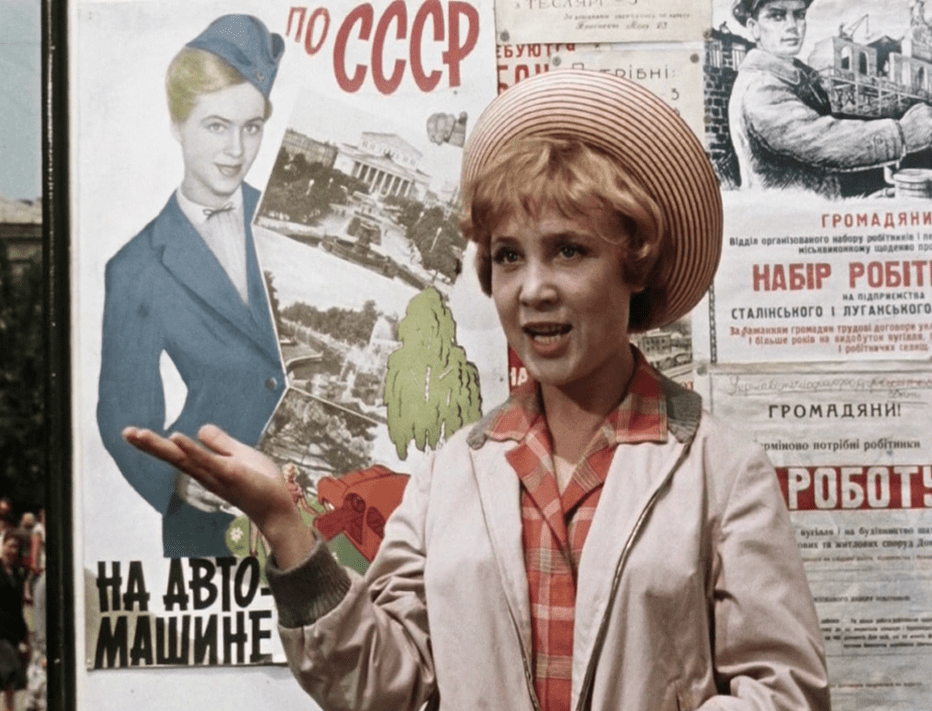
Queen of the Gas Station / Koroleva benzokolonky
1962
Ukrainian SSR, Oleksandr Dovzhenko Film Studio
78 min
Oleksii Mishurin, Mykola Litus
Petro Lubenskyi
Mykhailo Ivanov, Oleksandr Pyshchykov
Nadezhda Rumiantseva, Andrii Sova, Nonna Koperzhynska, Yurii Belov, Aleksei Kozhevnikov, Sergei Blinnikov, Vladimir Belokurov, Mykola Yakovchenko, Oleksandr Khvyllia, Pavel Vinnik
Liudmyla Dobryvechir, the 17-year-old girl who temporarily takes a job at a gas station on the Kyiv-Yalta road while waiting for an audition in her favorite Ballet on Ice is the uncrowned “gas station queen.” It turns out that the young woman can find her calling at the gas station, and being a star in a small town is no less illustrious than appearing on TV. Even the ever-skeptical and very serious gas station manager, Panas Petrovych, can not stand in Liudmyla’s way.
The movie was an instant hit — according to some reports, The Queen was dominating the box-office in the Soviet Union for about five years until it was pushed down by Kavkazkaia plennitsa / Kidnapping, Caucasian Style (1967).
Yet the movie’s production at the Oleksandr Dovzhenko Film Studio was a lengthy process. Mykola Litus, a student of Grigorii Aleksandrov and a novice, advocated for the leading role to be given to Estonian actress Terje Luik. But the film’s Creative Counsel insisted on a different leading star. More so, they gave the director’s position to a more experienced Oleksii Mishurin (Lita molodii / Years of Young (1958)). Litus remained on the set as the assistant director, and Nadezhda Rumiantseva played her last leading role before meeting the age “glass ceiling” and switched to animation. Luik’s career did not take off and she did not become an actress. Instead, she worked as a movie director at Soviet Union State television.
Queen of the Gas Station is the last Soviet screwball comedy, the swan song of this genre, which emerged thanks to the influence of above mentioned Aleksandrov, who transplanted it from American soil to the Stalinist ground. Today, this film with its comical “activist” pathos appears more progressive than the comedies of the Thaw and Stagnation periods, in which the heroines realized themselves exclusively in romantic relationships. The film by Mishurin and Litus duo not only captured the style shift at the beginning of the turbulent 1960s but also, to this day, it is managing to attract tourists to the tiny Pyriatyn in Poltava region, where the iconic gas station with a distinctive tower is located.




